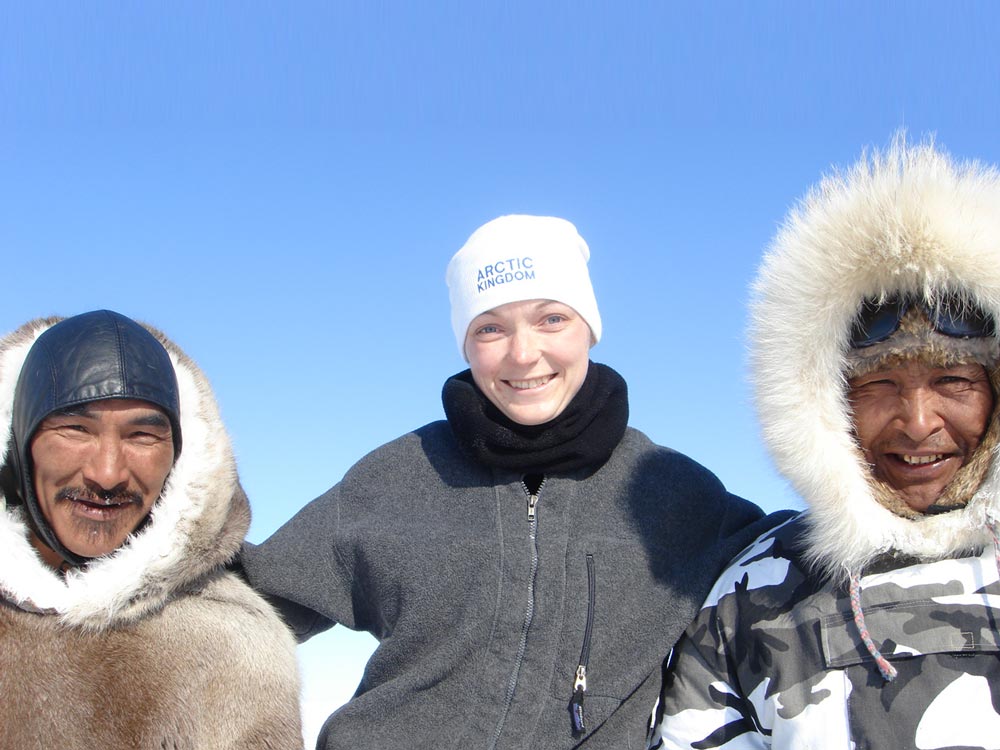Taloyoak is located on the southwestern coast of Boothia Peninsula at the Northwest Passage. It is the northernmost community on Canada’s mainland.
The hamlet name of ‘Taloyoak’ means ‘large caribou hunting blind’ in Inuktitut. These screens were built with piled stones along the caribou migration routes. Muskoxen are also found near here and the fishing is some of the best in Nunavut.
Artistically unique Taloyoak carvings made from stone, whalebone, caribou antler and walrus ivory frequently depict mystical subjects of ancient Inuit legend
1,076
98% Inuit
Inuktitut, English
Longitude 93° 31′ W
Latitude 69° 32′ N
Elevation 28 m
Taloyoak is surrounded by expanses of gently rolling dark tundra and boulder strewn coastal features. There are innumerable small lakes and rivers. Much of the terrain is rocky with an impressive formation rising from the landscape.
Weather & Climate
The sea ice usually breaks up in June. Summer temperatures range from 5°C to 20°C. The snow begins to fall in late September or early October. Winter days have four hours of daylight and temperatures that range from -15°C to -35°C. With winter wind chill it can feel like -50°C.
| Average Temperature in Taloyoak | |||
|---|---|---|---|
| January | -34oC | February | -34oC |
| March | -31oC | April | -21oC |
| May | -9oC | June | 1oC |
| July | 7oC | August | 6oC |
| September | 6oC | October | -12oC |
| November | -23oC | December | -27oC |
HISTORY
The local people are Netsilingmiut. They are direct descendants of the ancient Thule people and they have lived in the area around Taloyoak, Gjoa Haven and Kugaaruk for over a thousand years.
Thule Culture (Proto-Inuit): 1000 AD to 1600 AD
Inuit Culture (Eskimo): 1600 AD to present-day
The Netsilik Inuit are one of the last northern indigenous peoples to have any interaction with Christian missionaries.
First contact with European people began in the early 19th century. The search for the Northwest Passage brought the Scottish explorer John Ross to the Taloyoak area in 1829 when his ship the Victory became trapped in ice nearby.
Ross and his crew were stranded here for four years. They survived and explored the Boothia Peninsula region with local Netsilingmiut assistance, locating the Magnetic North Pole in 1831. Later explorers still searching for the Northwest Passage and the lost John Franklin expedition of 1845 visited from 1848 to 1860.
Scottish and American whaling vessels frequented these waters in those years. The famous Norwegian explorer Roald Amundsen passed through this region in his ship the Gjøa on route to his discovery and transit of the Northwest Passage in 1905-1906.
The permanent settlement of Spence Bay was established in 1948 when the Hudson Bay Company closed its trading post at Fort Ross and relocated it here.
Royal Canadian Mounted Police arrived with the HBC trading post. Catholic and Anglican missions followed in the 1950s. The community changed its name to Taloyoak in 1992.
Hunting, fishing and trapping remain an important part of everyday life here. These traditional activities are supplemented by carving, handicrafts and salaried employment in the hamlet, which combine to provide an Inuit lifestyle that is balanced between old and new.
ACTIVITIES AND WILDLIFE
There are several trails from the hamlet leading to camping and fishing spots at nearby lakes such as Middle Lake, Redfish Lake and Netsilik Lake.
These pathways are perfect for strolling, hiking and ATV riding. While exploring the local area on these well travelled trails you may encounter several different kinds of local wildlife, including caribou, lemmings, marmots, hares, foxes, ravens, seagulls, terns, snow buntings, ptarmigans, gyrfalcons and snowy owls, plus large flocks of migrating ducks and geese in the spring and fall.
There are whales, seals, cod and whitefish in the sea and the lakes contain trout and char. Fishing derbies are held each spring and fall. Wolves, wolverines and polar bears are sometimes seen in this region. In the winter, sledding and snowmobiling are the popular ways to get around.
ARTS AND CULTURE
Taloyoak artists and artisans are prolific creators of arts and crafts that are available at the Paleojook co-op.
Local carvings are made from stone, bone, antler and ivory.
The community is famous for its popular ‘packing dolls’ — arctic animals dressed as women carrying their young in the hoods of their amautiit (traditional parkas) that are hand sewn and signed by the artist. These beautifully crafted dolls and other unique textile items are produced at Taluq Designs.
Parks
There are no national or territorial parks located near Taloyoak, but there are beautiful camping sites at several fishing lakes nearby.



